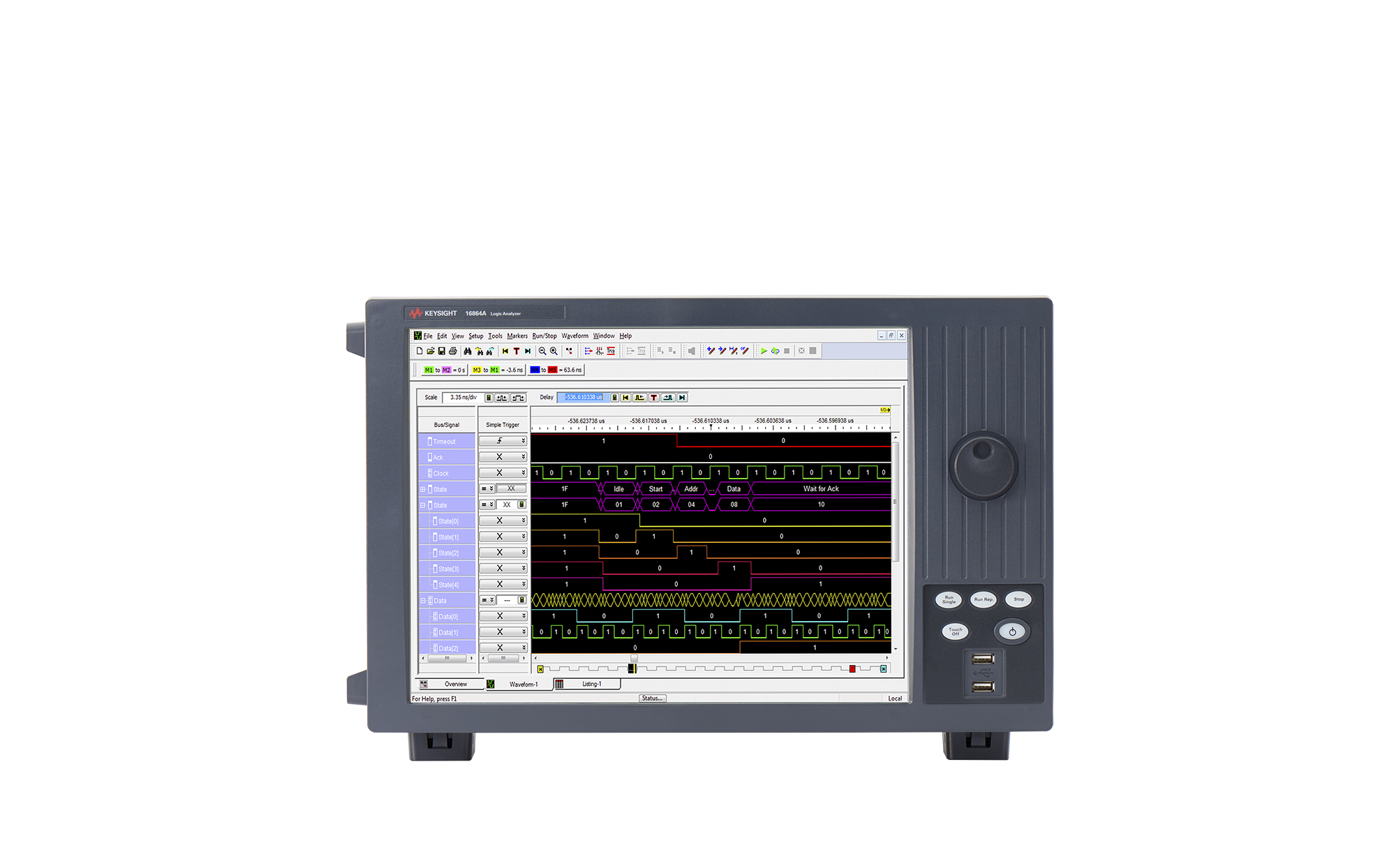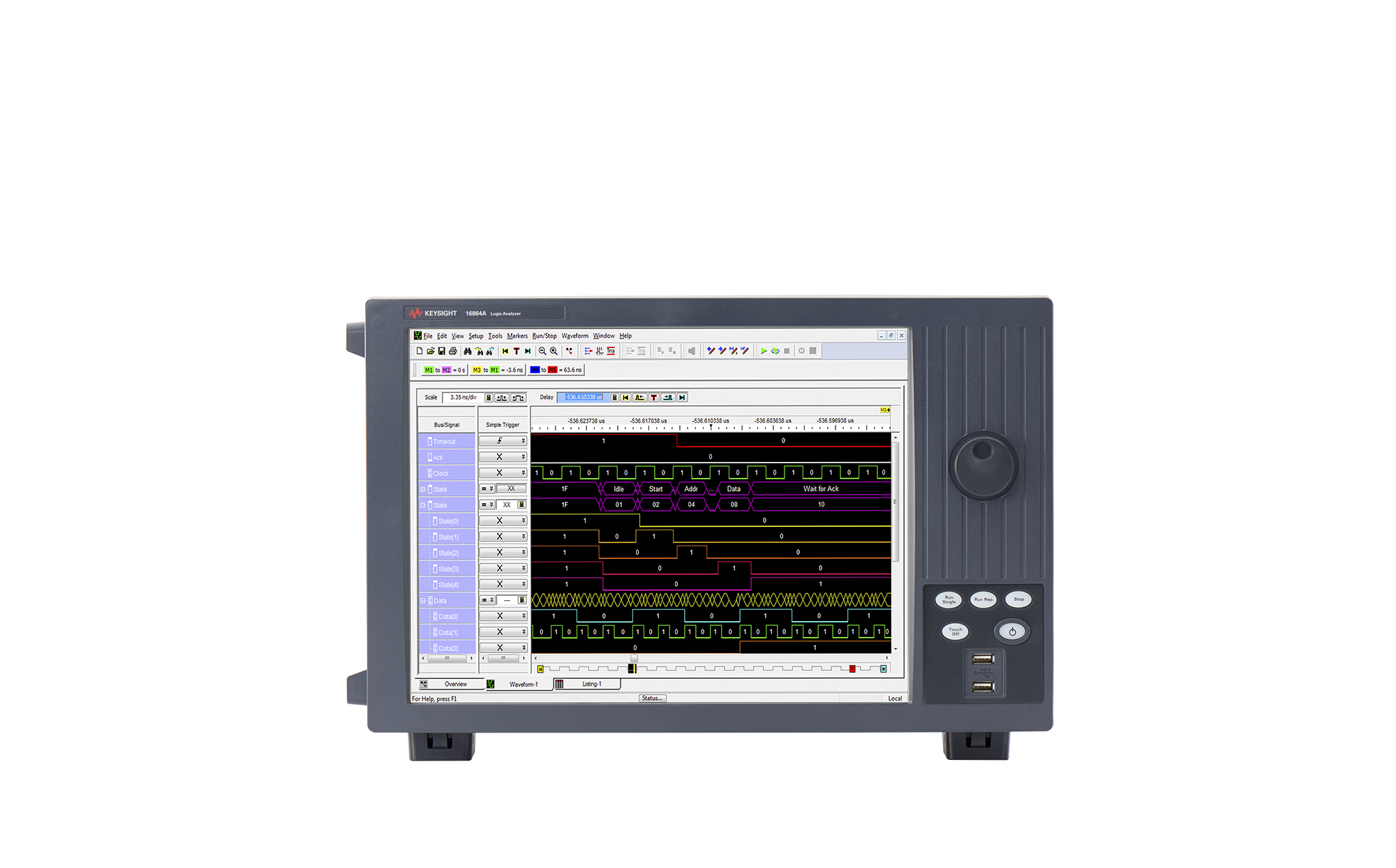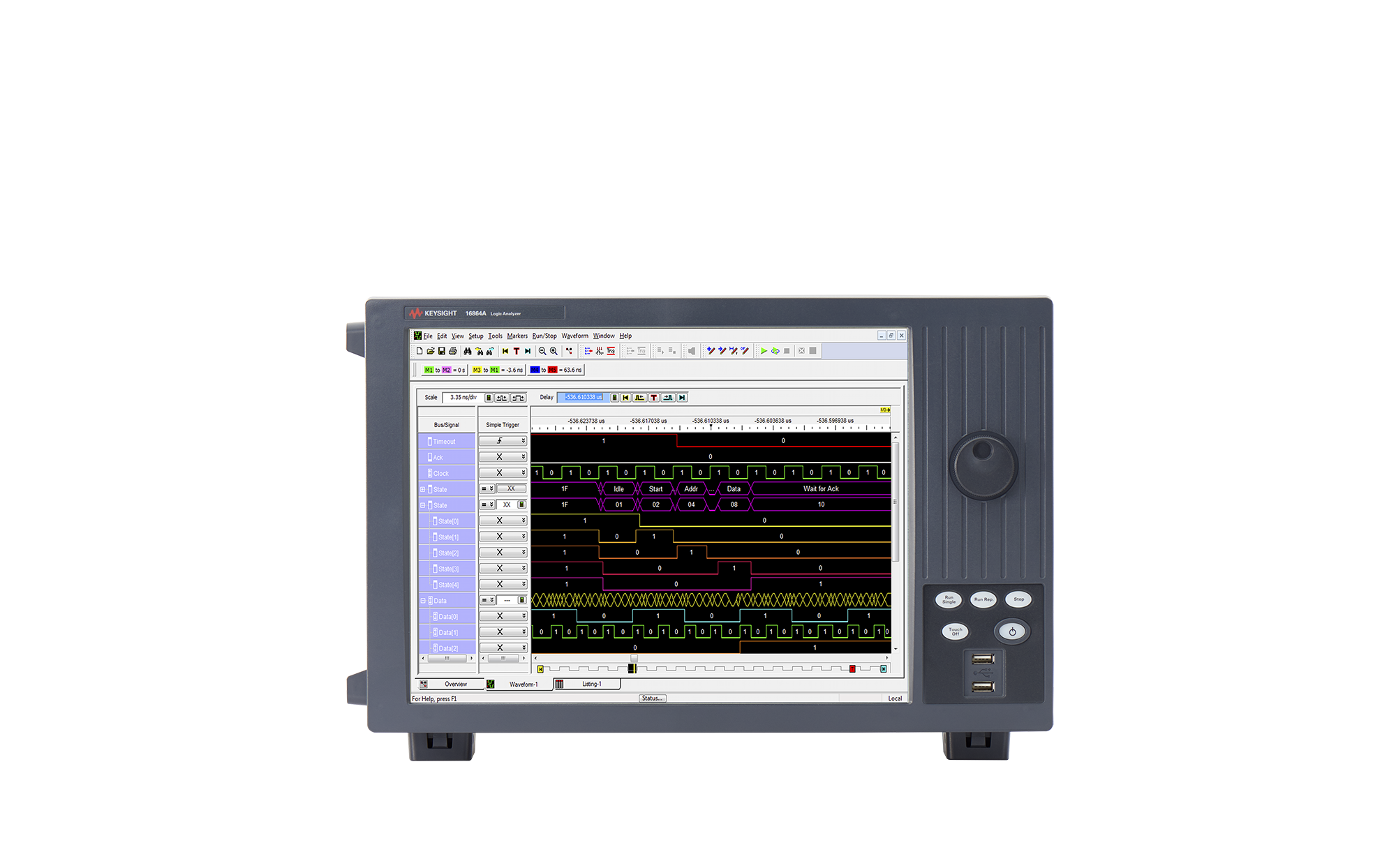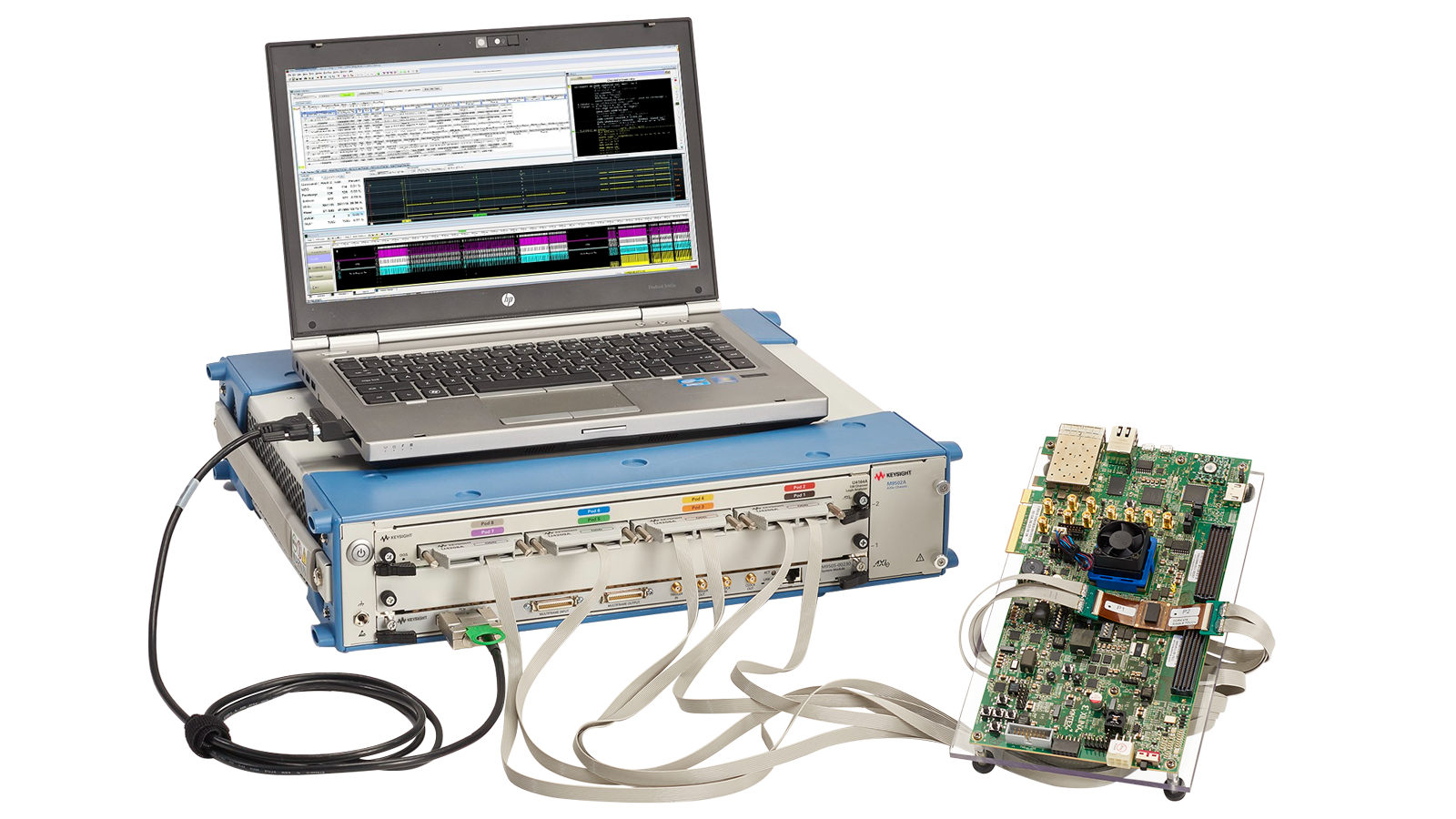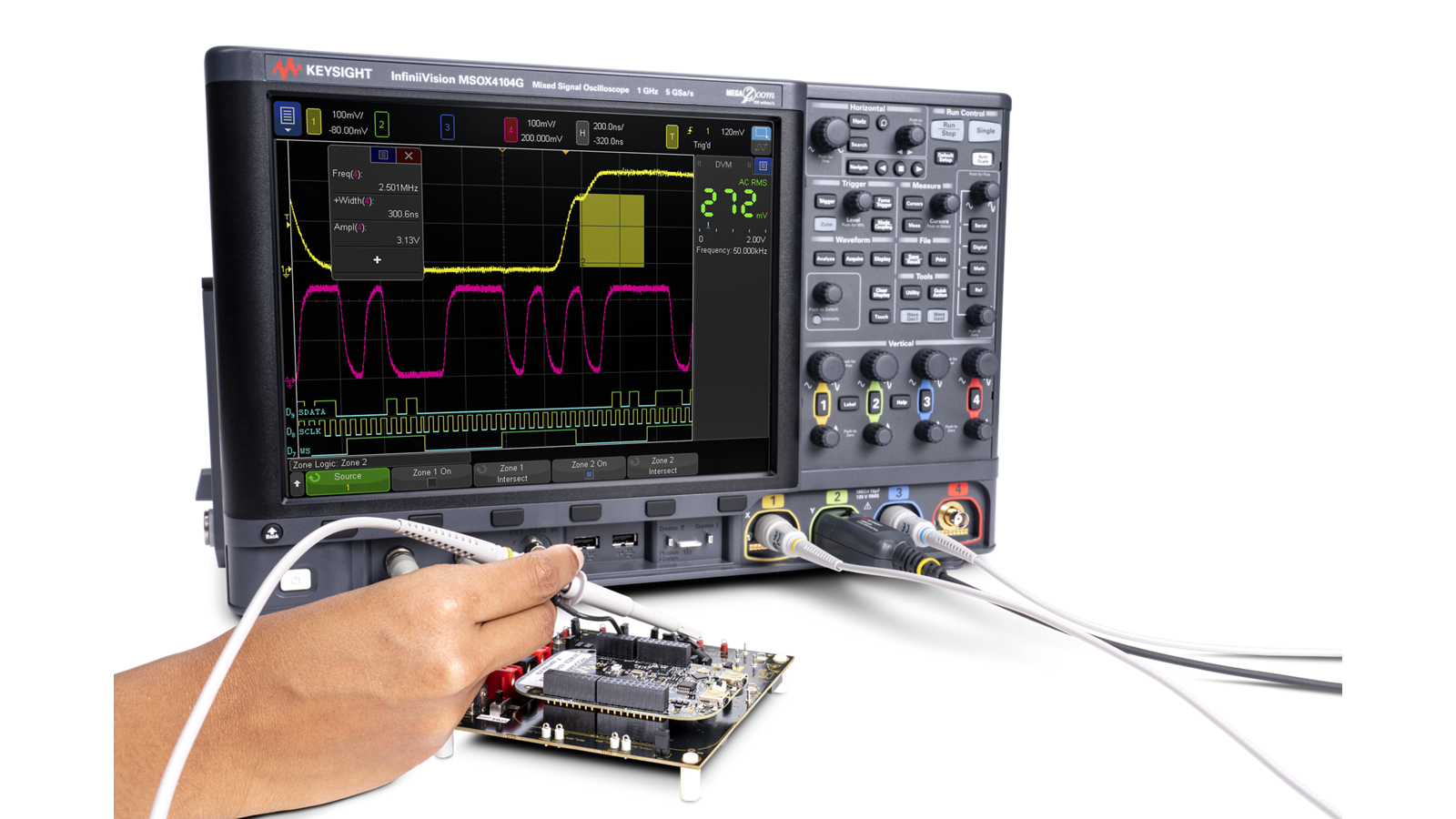What are you looking for?
Logic Analyzers
Logic analyzers provide seamless logic analysis tools to solve tough debug problems and get your products to market faster

A Keysight logic analyzer helps you minimize project risk by providing the most reliable, accurate measurements with the most complete view of system behavior. This comprehensive family of logic analyzers offers measurement capabilities, probing, logic analyzer application support, and analysis tools to meet your most demanding digital debug needs.
- U41XX Series modular logic analyzers in an AXIe-based chassis provide the highest performance and best long-term value, with a state acquisition rate up to 4 Gb/s, 136 channels per module, and memory depth up to 200 M.
- 16860 Series portable logic analyzers deliver the fastest timing capture with deep memory for fast digital system debugging. Take advantage of 2.5 GHz timing capture with up to 128 M sample memory, up to 1.4 GHz trigger sequencer for state and timing capture, and both single-ended and differential logic analyzer probing options.
- 16900 Series modular logic analyzers give you the flexibility to configure a system the way you want. Purchase what you need now, then upgrade as your needs evolve.
- 16800 Series portable logic analyzers offer you an exclusive combination of high-performance logic analysis and pattern generation in a fixed logic analyzer configuration at an affordable price. State speed and memory depth are upgradeable at the time of purchase or later as your needs evolve.
Find the Series That's Right for You
Mixed-Signal Oscilloscopes and Logic Analyzers
If you do not need as many digital channels as a dedicated logic analyzer provides, consider that many of Keysight's mixed-signal oscilloscopes have integrated logic analyzers up to 16 digital channels. Some benefits of using an integrated instrument include:
Real-time correlation bridges the digital-analog divide by correlating digital logic states with corresponding analog waveforms in real time for a comprehensive view of your project's performance.
Streamlined troubleshooting using an oscilloscope logic analyzer provides a single, integrated solution to detect communication errors, optimize data transfer rates, and ensure precise synchronization — all from one intuitive interface.
Easy protocol decoding using a mixed-signal oscilloscope equipped with protocol decoding software enables quick and efficient analysis of popular protocols such as I2C, SPI, UART, and CAN.
Power efficiency insights that correlate digital logic states with analog power waveforms reveals crucial insights into power consumption and efficiency.
Frequently Asked Questions - Logic Analyzers
Logic analyzers are tools for measuring the performance of signals on a digital bus and for debugging digital systems. Essentially, they make digital measurements instead of analog measurements unlike a signal analyzer or oscilloscope. A logic analyzer can show data in terms of timing diagrams, or it can decode the received data into the protocol or state machine information for easier debugging.
Selecting the right logic analyzer depends on several features tailored to your specific requirements. Considerations such as the channel count, sampling rate / mode, protocol support, memory depth, and software compatibility play pivotal roles in determining the ideal fit for your tasks. Additionally, assessing your threshold needs is crucial. Ensure that you fine tune the logic analyzer and accompanying probes to the signal levels of your system under test.
Synchronous (state) capture means that the measurement system in the logic analyzer determines the logic value of digital parallel buses or control lines when there is an associated valid clock, such as a rising edge on a probed system clock line. In contrast, asynchronous (timing) capture means that the measurement system samples the value of a bus or individual digital lines asynchronously from the system under test or not in sync with the system.
Many industries use logic analyzers that require protocol analysis and digital system debugging. Examples include embedded systems development, digital circuit design, and debugging digital protocols like I2C, UART, Ethernet, USB, and DDR memory. By capturing and visualizing the precise sequence of high and low voltage states over time, they unveil critical insights into the synchronization and coordination of digital signals. This capability proves invaluable in debugging communication errors, optimizing data transfer rates, and ensuring protocol compliance — Keysight tailors logic analyzers and interposers specifically for DDR memory protocol analysis.
For precise logic analysis, Keysight provides high-impedance probes with interposers that fit between the memory chip and the memory controller. This process enables you to make signal quality or protocol measurements with minimal effect on the system under test. These robust probes and interposers ensure solid connections in varied conditions, while their noise-resistant design protects against electromagnetic interference for clean, accurate data capture. Paired with Keysight logic analyzers' front-end circuitry, these probes optimize performance, guaranteeing precise measurements at specified clock rates.
Oscilloscopes measure and visualize the analog signals in a system, while logic analyzers limit themselves to discrete digital signals. Logic analyzers generally support more channels than an oscilloscope, which can be important when testing systems with multiple serial or parallel bus channels. Oscilloscopes can measure digital signals; however, analog measurements of digital signals are primarily concerned with rise time, eye height, and other signal integrity measurements rather than studying the logic levels and timing of a digital signal. Mixed-signal oscilloscopes feature digital logic analysis capabilities by supporting digital channel inputs as well as analog ports, although rarely as many channels as a dedicated logic analyzer.
Featured Resources
Want help or have questions?
